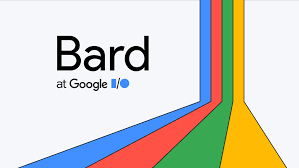The conversational AI service of Google, Bard, has been enhanced with four additional features to enable users get more from the application, including uploading images with prompts.
Users can now pin and rename their conversations with Bard, making it easier to revisit conversations that contain important information or ideas later.
Through the export code to more places feature, users can now export Python code to Replit, in addition to Google Colab, making it easier for users to share their code with others or use it in other projects.
Users will also be able to share responses with friends using shareable links, making it easier to collaborate on projects or get feedback on ideas.
In a statement on Thursday, Google said Bard can now be accessed in 59 new countries and territories, with 40 new languages added to the app, including Swahili, the first African language to be included.
The upgraded Bard also allows users to better customise their experience, boost their creativity, and get more done.
It can now be accessed in the most widely spoken languages, including Swahili, Chinese, German, Spanish, Arabic, and Hindi, and Spanish. Users can now access Bard in their preferred language, with text-to-speech also enabled in 8 languages.
“We’re excited that this is Bard’s largest expansion to date – we see its global availability as a great democratizer of knowledge,” said Dorothy Ooko, Head of Communications and Public Affairs, SSA, Google. “That’s why we created Bard: to help you explore that curiosity, augment your imagination and ultimately get your ideas off the ground — not just by answering your questions, but by helping you build on them.”
As part of the expansion, new updates have been introduced to make the Bard experience more interactive and user-friendly. The Listen to Responses feature now provides an auditory dimension to Bard’s responses, making it particularly useful for gaining accurate pronunciation or understanding a script with just a simple click on the sound icon.
Users can also now adjust Bard’s responses by changing the tone and style of its responses to five different options: simple, long, short, professional or casual, offering a tailored interaction to match individual needs. While this feature has been initially launched in English, plans are underway to extend it to other languages, broadening its accessibility to users around the globe.
Bard seeks to combine the breadth of the world’s knowledge with the power, intelligence and creativity of Google’s large language models. It draws on information from the web to provide responses.
As an experimental technology, Bard may occasionally make inaccurate statements in response to user prompts. So if a response from Bard is inaccurate or unsafe, if one experiences an issue, or just wants to provide feedback, there’s an easy way to do that.










